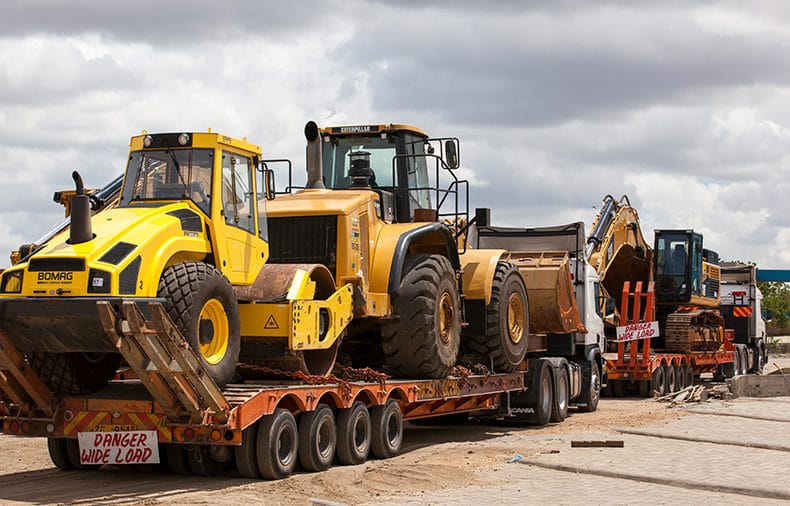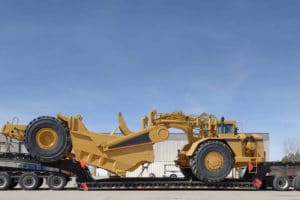There are certain measures you can take to make sure your heavy equipment shipment can go smoothly and efficiently. You will need to choose the right heavy equipment transporter, make sure you have the suitable freight insurance, and choose among the appropriate options for transporting your heavy equipment.
Most equipment will need to be shipped on a flatbed or standard trailer, though in some cases it may be able to be towed. For larger or non-moving equipment, you will likely require a specialized trailer such as a Step deck or a Double Drop deck. For international shipments, you can use a Roll-On/Roll-off service, or a flat-rack container on an overseas transport vessel. Learn more about the options below.
Flatbeds
Flatbed hauling is probably the most common method of shipping heavy equipment and will be more widely available with carriers. For the majority of heavy equipment shipping needs, a simple flatbed should be sufficient. Flatbeds are available in a variety of sizes and capacities, allow for easy loading and unloading and can carry up to 48,000 pounds. When choosing a flatbed hauler, confirm that that the truck will be able to handle the weight of your equipment and that you have the tools necessary to load and unload it.
Towing
For short distance moves, your equipment may be able to be towed. Make sure that you know which preparations need to be made to safely tow your machinery, such as preparing the gearbox and tires for towing conditions. Specialty towing companies will have a variety of tow trucks to handle many types and sizes of equipment.
Special Trailers
You may require a special trailer for over-sized or very heavy equipment. Step deck and double drop trailers can allow for taller or heavier equipment to be loaded and transported. If your equipment warrants a specialty trailer, there is a high likelihood that it will also require special permits. Consult with your transport provider so that necessary permits and special considerations are taken care of.
Shipping Overseas
When shipping your heavy equipment overseas you have a few options. The most common method for shipping vehicles is Roll-on/Roll-off (RO-RO). Your equipment is driven on and off the transport vessel via ramps. Another option is a flat rack container. A flat rack is similar to a flat bed truck. Your heavy equipment is placed on the flat rack, and then loaded onto the transport vessel. These racks can hold equipment up to 88,000 pounds. For some international shipments, it may be necessary to disassemble your equipment prior to shipping and then reassemble upon arrival. When shipping your equipment overseas, you will need to arrange transport to the warehouse or port where your equipment will leave from.
Other Considerations
Whichever option you use, choose a qualified transporter that can fulfill your needs and expectations, and be familiar with the services and insurance they offer. Confirm that the service provider has the ability to load and unload the equipment and that any special needs are taken care of. This could include special cranes or ramps at the pickup and drop-off location, or any permits that may be required for over-sized loads.




